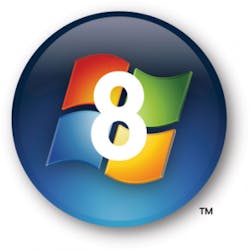When Werner Krings had the opportunity to evaluate the new Windows 8 operating system, he says, “I was stunned. Some of the features and improvements are really quite significant.” Krings is a business developer for global manufacturing software vendor Apriso, and in his spare time is researching the impact of social media within a manufacturing business development environment for his doctorate.
Writing in Apriso’s Manufacturing Transformation blog, Krings describes how he was given the option to upgrade to Windows 8 when he bought a new personal notebook computer and so had the opportunity to play with Windows 8. His conclusion: “This new Windows 8 operating system should make a huge difference in how not only I will use my new notebook, but also how manufacturers can use this type of device on the shop floor.”
The following is a list of his five predictions for how Windows 8 will impact our manufacturing world:
1. The redesign of the start or home screen. It now consists of a grid of dynamically updating tiles that represent the individual applications that have been installed on the device. A new Windows Store promises to make application delivery streamlined, not only for the end user, but for the developers that seek to write new apps for Windows users to have ready access. This, of course, has been part of the success of Apple’s app store, but the dynamic nature of how tiles can be updated to reflect new content is really significant. For example, a manufacturing intelligence type of application can run within this type of environment that offers periodic updates as part of the home screen’s layout—all within the confines of a standard configured device.
2. Better support for increasing use of mobile devices. This transition has impacted many industries, including manufacturing. While initial adoption focused on maintenance and inventory tracking use cases, we are only just touching the surface of what productivity tools will soon be possible. Windows 8 offers a few capabilities that complement this transformation including faster start up through a Hybrid boot mode, a more effective data transfer rate and enhanced power management. Each of these features translates into a more “friendly” device to take with you on the road, or walking around your factory. Mobile devices enable executives to have operational intelligence at their fingertips, no matter where they are or when they need it.
3. Greater focus on a touchscreen device. This decision was clearly focused on optimizing how our mobile devices are more easily used without a mouse, using swipe commands to create shortcuts for common device interactions. But, the Windows 8 operating system works fine on other devices lacking a touchscreen, so it will work fine in operations environments whereby those wearing gloves might not be able to use touchscreen technology. What is key is that greater consistency can be achieved across devices, from a single platform. Best in class manufacturing operations management solutions follow the same strategy, and it appears to work quite well for those manufacturers that have fully embraced this strategy.
4. Built in connectivity to the cloud. In an environment where distributed workers need to effectively share information within their four walls and beyond to partners and suppliers, leveraging the cloud as a shared data and application repository makes a lot of sense. Windows 8 is an ideal operating system to leverage for this type of activity, based on its ease of configuration to connect to Windows Azure and other cloud-based service providers.
5. Greater focus on security features. This was a welcome addition, which includes new authentication methods that are specifically tailored towards touchscreens, including PIN numbers and picture passwords. If manufacturers are going to fully embrace this new technology, then there must be the appropriate access control and security features. At minimum, those manufactures operating in highly regulated environments must be able to document and audit that access to sensitive process update procedures is limited to only those with authority to do so. Windows 8 appears to have taken a step in the right direction here by improving this security and access control levels.
In conclusion, I would propose that those manufacturers with a next generation, platform-based IT architecture will appreciated the new features and capabilities of Windows 8, and should continue to reap more benefits as more applications are launched that are more manufacturing focused.
Pre-programmed access to the “cloud” for data aggregation and application deliver will only further the financial incentives of manufacturers to greater leverage Microsoft’s latest operating system as another platform-based approach for process consistency and performance improvement. This strategy can enable users to more fully embrace this new technology based on a more intuitive usability, as it renders work processes more effectively and across more mobile devices instead of just fixed, desktop-based solutions. Further, it can deliver a more secure business and work environment safer. Each of these benefits is in line with the philosophy of continuous improvement, Lean or resourceful manufacturing.

